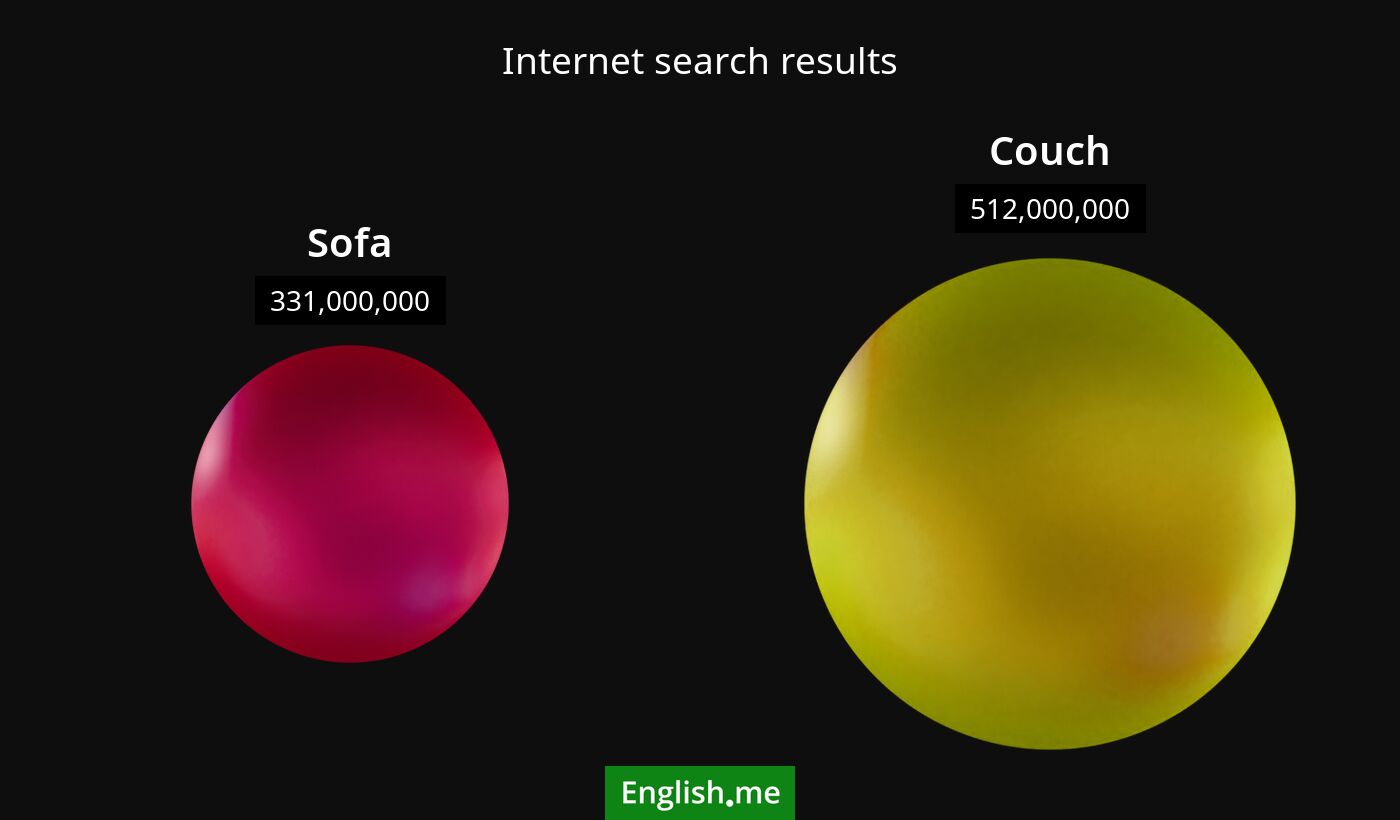"Sofa" vs. "couch": a comfortable comparison
Reviewed and edited by  Anwar Kareem 09/11/2024, 13:09
Anwar Kareem 09/11/2024, 13:09
English.me team member

 What is similar?
What is similar?
Both "sofa" and "couch" refer to upholstered seating furniture designed for multiple people to sit on, typically found in living rooms or lounges.
 What is different?
What is different?
The term "sofa" is often associated with a more formal and structured piece of furniture, while "couch" can be more informal and is a term more commonly used in North America. Historically, "couch" referred to a piece of furniture designed for lying down, derived from the French word "couche", while "sofa" comes from the Arabic word "suffah". In modern usage, they are largely interchangeable.
 Which one is more common?
Which one is more common?

 Examples of usage
Examples of usage
Sofa- She bought a new sofa for the living room.
- The sofa was too large for the small apartment.
- They sat together on the sofa, watching TV.
- He fell asleep on the couch after a long day at work.
- The couch needs to be cleaned regularly.
- They arranged the cushions on the couch for extra comfort.

 English
English español
español française
française italiano
italiano deutsche
deutsche 日本語
日本語 polski
polski česky
česky svenska
svenska Türkçe
Türkçe Nederlands
Nederlands